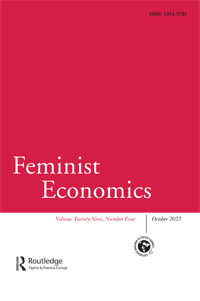
Lo más reciente
This article explores the short-term effects of the COVID-19 crisis on gender gaps in the Colombian labor market. Colombia offers an interesting case for analysis because, as with most countries in the Global South, its combination of formal and informal labor in the labor market complicates the pandemic’s aftermath. This analysis highlights the differences between men’s and women’s labor outcomes in terms of the effects of the crisis. Specifically, the study documents a phenomenon that the authors call a “female fall,” by which, in comparison to men, women lost status in the labor market. This article also shows a downgrade in the condition of women who remained employed via lower wages, especially in the informal sector. As a result of the pandemic, increasing numbers of women were relegated to domestic work. Finally, the article discusses how women’s burden of unpaid care increased.
 Ana María Tribín-Uribee,
Ana María Tribín-Uribee,  Karen García-Rojase,
Karen García-Rojase, 